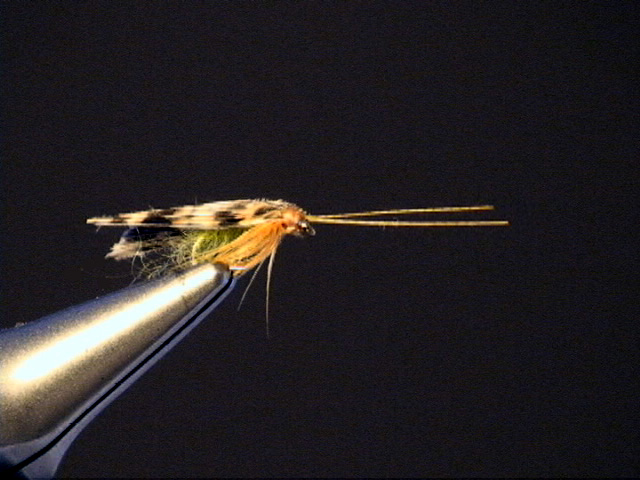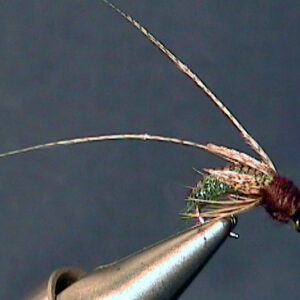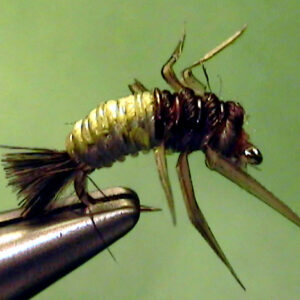Hook Size: 18
The Perfect Fly Little Sister Caddis Adult is a trout fly that imitates the adult or fully grown stage of life of the caddisfly. They stay on the surface of the water for a short time before departing the water. They should be fished on the surface during the hatch as well as later on when the female adults return to the water to deposit their eggs. It is a dry fly that should be treated with floatant.
The Little Sister adult Caddisflies become important when the females are
depositing their eggs. They do this on the surface of the water, or by diving to
the bottom. It depends on the particular species. If they paste the eggs on the
bottom, the caddisflies rise back to the surface to drift in the current and die, or
in some cases, to fly away to repeat the process later.
The Little Sister caddisfly egg laying activity can occur at the same time they are
emerging. The egg laying usually starts near the end of the emergence period
and last for an hour or two during the time you can see well. Egg laying continues
on into the night in many cases. As mentioned before, the later in the season
and the warmer the weather and water is, the more likely they will deposit their
eggs during the evening.
In many case you may not be able to fish during egg ovipositing but for a hour or
so because it usually doesn’t start until after sunset. On overcast or rainy days,
egg laying can start much earlier. If you find the Little Sister Caddisflies emerging
and depositing their eggs at the same time, fish an imitation of the pupa. It’s
almost always more effective than imitating the egg layers.
Presentation:
If you watch carefully, you will be able to see the caddisflies dipping to the
water when they are depositing their eggs. Of course, that is the area where you
want to place your fly. It isn’t exactly easy to see them in the low light conditions
they deposit their eggs in. In many cases, the splashes or rises of the feeding
trout will clue you in on where the trout are feeding on them.
You can try to imitate the skittering manner in which the caddisflies flutter around
on the surface but I find it best just to use a dead drift. I spook more trout than I
catch trying to get fancy.
The trout will also eat the spent flies after they have finished their egg laying
duty but this usually occurs mostly after dark. If you think this is taking place,
drift your fly in the area of the spent females.


